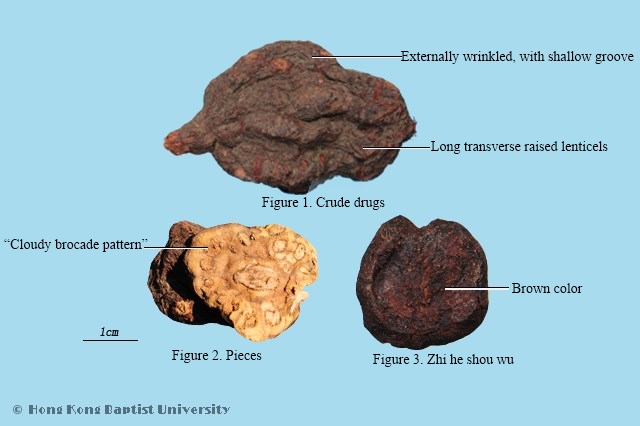Production RegionsPrimarily produced in Shaanxi, southern Gansu, and the eastern, central, southern and southwestern regions of China.
Macroscopic FeaturesLumps or irregular fusiform. Externally reddish-brown, wrinkled, with shallow grooves, and long transverse raised lenticels and thin scars of root. Heavy, firm texture, difficult to break. Fractured surface is pale yellowish-brown or pale reddish-brown, powdery; cortex has 4~11 abnormal vascular bundles, with a cloudy brocade pattern, central xylem is relatively large, sometimes with a woody center. faint odor; slightly bitter and sweet and astringent.
Quality RequirementsSuperior medicinal material has heavy, firm texture.
PropertiesBitter, sweet, astringent.
FunctionsResolves toxin, disperses swelling-abscesses, stops malaria, moistens intestines, frees stools. Apply to sores and abscesses, scrofula, wind rash and pruritus, deficiency due to chronic malaria, constipation induced by dryness of the intestine.
Processed FormZhi he shou wu: Irregular wrinkled lumps, externally black-brown or brown, uneven surface. Firm texture, fractured surface is horny, brown or black. faint odor; slightly sweet and astringent taste. Property is bitter, sweet, astringent; slightly warm; belongs to liver, heart and kidney channels.
Technical Terms'Cloudy brocade pattern’: This refers to numerous abnormal vascular bundles on the cortex of the tuberous root’s horizontally cut surface, which form a pattern similar to the shape of clouds, also called ‘cloud lines (yun wen)’.
OriginThe dried tubular root of Polygonum multiflorum Thunb.(Polygonaceae)
